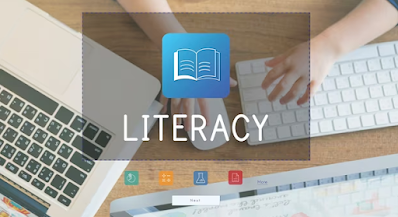The role of technology in education: opportunities and challenges
The role of technology in education: opportunities and challenges
Education has always been an essential component of human development, and over the years, technology has played a significant role in revolutionizing the education sector. From traditional chalk and board teaching to modern e-learning methods, technology has transformed the way we learn and access information. In this blog post, we will explore the role of technology in education, including the opportunities and challenges it presents.
Opportunities of Technology in Education:
Accessibility: Technology has made education more accessible to students worldwide. With the internet, students can access educational resources and materials from anywhere in the world, breaking down geographical barriers.
Personalization: Technology has made it easier for educators to personalize learning for individual students. Adaptive learning software can adjust to a student's learning pace, style, and level of comprehension, making it possible to tailor education to each student's needs.
Interactive Learning: Technology has made learning more interactive, engaging, and fun. From online games to interactive simulations, students can learn and explore concepts in an engaging way that promotes critical thinking and problem-solving.
Collaboration: Technology has also enabled collaborative learning, where students can work together on group projects and share knowledge and ideas in real-time, irrespective of their location.
Flexibility: Technology has enabled flexible learning, where students can learn at their own pace, time, and place. This flexibility allows students to balance their educational pursuits with work and other commitments.
Challenges of Technology in Education:
Cost: Technology can be expensive, and not all schools or students have access to the latest devices and software. This digital divide can lead to disparities in education, with some students missing out on the opportunities technology provides.
Distractions: Technology can also be a distraction to students, with social media, games, and other online activities competing for their attention. This can negatively impact student learning and engagement.
Privacy and Security: The use of technology in education raises concerns about data privacy and security. Educational institutions and students must protect their personal and sensitive information from cyber-attacks and data breaches.
Teacher Training: Technology is only as effective as the educators who use it. Teachers must receive adequate training to integrate technology into their teaching methods effectively. This requires ongoing professional development and support.
Screen Time: With the increasing use of technology in education, students may spend more time in front of screens, leading to eye strain, headaches, and other health issues.
Conclusion:
Technology has opened up a world of opportunities in education, enabling access to resources and personalized learning experiences. However, it also presents challenges that must be addressed to ensure that all students benefit from the advantages of technology. By addressing these challenges, we can harness the full potential of technology to create a more equitable and effective education system that prepares students for the future.
#role#technology#education#opportunities#challenges#schoolerpsystem#schoolingkey




Comments
Post a Comment